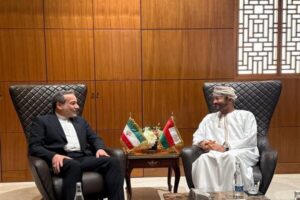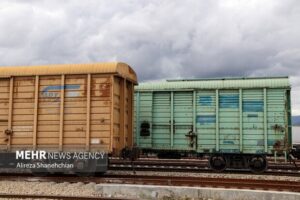The visit, the first high-level bilateral engagement following the recent brief but intense war with Israel and the US, comes at a time when the region is still grappling with security uncertainties and shifting geopolitical currents.
Pezeshkian’s trip signals Tehran’s determination to reinforce economic diplomacy as a cornerstone of its foreign policy, seeking to translate longstanding cultural and historical ties with Pakistan into tangible economic benefits.
Trade relations between Iran and Pakistan have witnessed a steady, if uneven, improvement over recent years. In the Iranian calendar year 1403, bilateral trade grew by 13.6 percent to approximately $3.1 billion, with Iran enjoying a trade surplus nearly 3.5 times larger than Pakistan’s.
Iranian exports primarily include petroleum products, dried milk, and dates, while Pakistan’s exports to Iran are dominated by rice and various oilseeds. Yet, early data from the first quarter of the current year reveal a decline in total trade volume, dropping by nearly 15 percent compared to the same period last year.
This contraction is largely attributed to ongoing regional security concerns and economic headwinds, underscoring the need for more robust and resilient trade frameworks.
The administration in Tehran has made economic diplomacy with neighboring states a strategic priority, focusing on the expansion of free trade agreements, reduction of tariffs, and facilitation of cross-border commerce.
Pezeshkian’s visit aims to accelerate these initiatives, addressing the logistical and infrastructural shortcomings that hinder trade growth.
Despite Iran’s advantageous geographic position and access to vital maritime routes, sea-borne trade with Pakistan remains minimal. Upgrading port facilities and maritime logistics is thus a strategic imperative, particularly given the opportunities presented by the China-Pakistan Economic Corridor (CPEC).
CPEC, a flagship project under China’s Belt and Road Initiative, connects western China to the Arabian Sea through Pakistan’s Gwadar port and represents a transformative force in regional trade.
For Iran, engagement with CPEC is not optional but essential. Its geography offers the most direct link between this corridor and broader West and Central Asian markets, creating an opportunity to enhance transit revenues and access new markets.
Moreover, Iran’s potential role as an energy supplier to Pakistan, through pipelines and electricity grids, can solidify its position as a key regional energy hub.
Broadening the economic relationship beyond energy and raw materials to include pharmaceuticals, industrial goods, and agriculture could make bilateral trade more resilient.
In the realms of energy infrastructure, transportation, petrochemicals, and other critical industries, the Islamic Republic of Iran commands a regional edge. This strategic advantage presents an opportunity for fruitful collaboration with Pakistan.
Joint ventures in border free trade zones and industrial parks have the potential to spur development in peripheral regions, generating employment and fostering economic stability.
Expanding private sector engagement, easing banking barriers, and fostering business ties can unlock significant bilateral opportunities—provided there is political will, planning, and trust on both sides.
Iran’s strategic position at the crossroads of Asia offers significant transit potential, which can be unlocked by modernizing rail and road links and harmonizing customs operations with Pakistani counterparts.
Security is inseparable from these ambitions. Both countries face threats from extremist groups and external interference intent on destabilizing the region.
Strengthened cooperation in security and intelligence-sharing is critical to protecting trade corridors and encouraging investment, without which economic progress would be vulnerable to disruption.
Beyond immediate economic interests, the Iran-Pakistan partnership carries profound political significance. It demonstrates the resolve of two neighboring Muslim-majority countries to pursue a path of self-reliant regional cooperation, independent of external influence.
This message resonates strongly amid the pressures of sanctions on Iran and the realignment of global power blocs. By emphasizing mutual respect and shared cultural heritage, Iran aims to build a durable regional alliance capable of withstanding geopolitical shocks.
Iran’s strategy of economic diplomacy with Pakistan, bolstered by engagement with China through CPEC, represents a pragmatic effort to diversify partnerships, mitigate the impact of sanctions, and promote regional integration.
While challenges persist—from infrastructure gaps to geopolitical uncertainties—the opportunities are compelling. With continued investment, diplomatic skill, and enhanced security cooperation, Iran can convert its geographic and cultural assets into sustainable economic growth.
This approach not only strengthens Iran’s domestic economy but also contributes to regional stability, positioning Tehran as a pivotal player in the evolving economic and political landscape of West and South Asia.
Pezeshkian’s visit thus encapsulates a forward-looking vision: one where economic connectivity and political dialogue combine to foster resilience and prosperity amid a complex regional environment.







